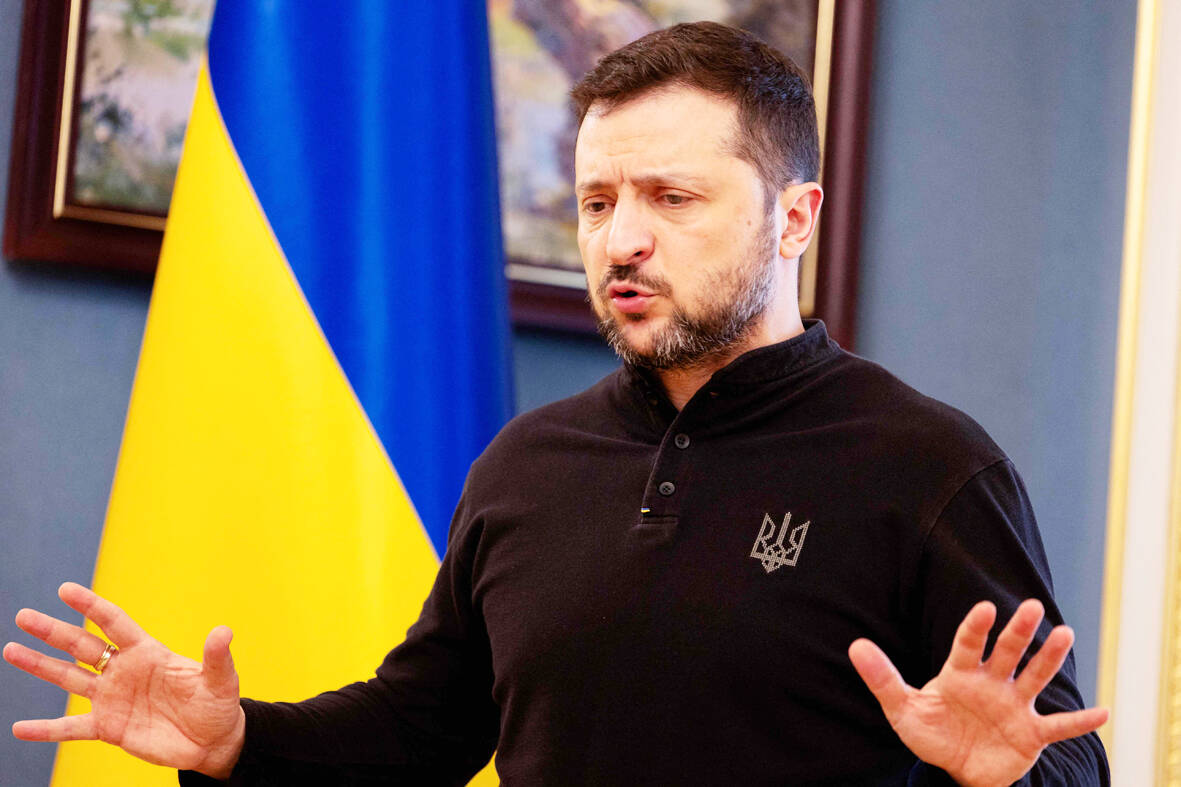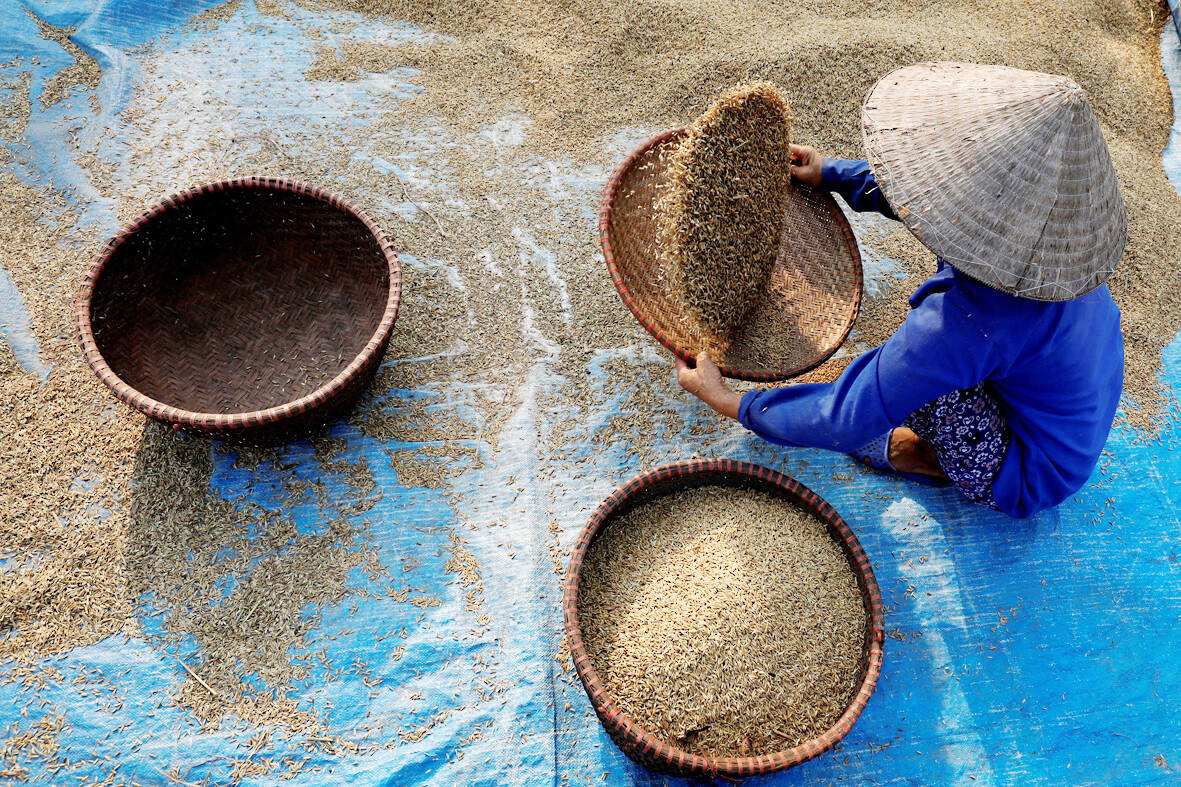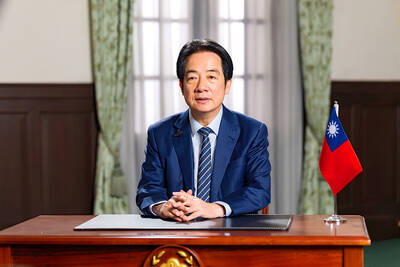Last week the State Department made several small changes to its Web information on Taiwan. First, it removed a statement saying that the US “does not support Taiwan independence.” The current statement now reads: “We oppose any unilateral changes to the status quo from either side. We expect cross-strait differences to be resolved by peaceful means, free from coercion, in a manner acceptable to the people on both sides of the Strait.”
In 2022 the administration of Joe Biden also removed that verbiage, but after a month of pressure from the People’s Republic of China (PRC), reinstated it. The American Institute in Taiwan (AIT) represented the changes as “routine.”
Next, in the section on Taiwan’s role in the international community, where the information sheet formerly said the US “will continue to support Taiwan’s membership in international organizations where statehood is not a requirement,” it has removed the last six words from that statement.

Photo: Reuters
Finally, in a move seemingly unrelated to Taiwan, it changed instances of “People’s Republic of China” on its factsheet for the PRC to “China,” a move many of us have spent years calling for.
It is possible to read this as a series of connected statements that support the idea of a Taiwan and China that are separate from each other. It is possible there is no connection at all. And it is possible that given other policies of US President Donald Trump, these changes are completely useless.
Commentators have produced acres of articles advising Taiwan on how to handle Trump, or prognosticating on what Trump’s Taiwan policy will be. Trump’s Taiwan policy won’t matter, because Taiwan is affected by innumerable elements of US foreign policy.

Photo: AFP
TRUMP’S DISQUIETING CHANGES
For example, far more important than words on the State Department Web site are other, extremely disquieting changes wrought by the new administration that will profoundly affect Taiwan.
Last week we learned that the Pentagon had been asked to reorder 8 percent of its budget each year from its legacy programs to Trump’s priorities. Nothing was said about upgrading its industrial base and expanding its shipyards, nor about increasing defense budgets which are already at historically low levels relative to GDP. The South China Morning Post (SCMP) reported that the US is going to trim its diplomatic mission to the PRC by up to 10 percent.

Photo: EPA-EFE
Across Asia the Trump Administration is driving a truck through relationships that directly and indirectly help Taiwan.
USAID IN VIETNAM
The US had a huge program with Vietnam through USAID, now destroyed by Elon Musk’s unauthorized and unregulated DOGE madness. Over 1,000 mine removal workers were sent home, while remediation work on a large contaminated airbase in southern Vietnam — one that the US might have needed someday — has halted. Those programs, along with Agent Orange programs, were part of a useful soft power program that was building relations with Vietnam that had been ongoing for 30 years. All gone now.

Photo: Reuters
It is probably only a coincidence that last week the PRC made one of its rare protests against Vietnam’s island-building in the South China Sea. But as the PRC becomes increasingly confident that the US is in retreat and its former allies consider it erratic and unreliable, the complaints and “gray zone” actions will grow. The US needed Vietnam’s support if it contemplates war with the PRC.
NEPAL AID FROZEN
Nepal, long a target of PRC pressure and land border “salami slicing,” became a victim of the freeze in foreign aid. Under the Millenium Program, the US provides funds designed to counter PRC influence in Asia and Africa. That program had struck a deal with Nepal to block PRC funding and instead choose a US$500 million grant. The funding freeze stunned US supporters in Nepal, and will only help the PRC, especially when it points out US unreliability to other nations on its borders.
DETERRING N KOREA
Shifting Trump policies and tariff challenges to Japan and South Korea (and Taiwan) are likely to weaken deterrence against North Korea. This will also affect South Korea’s ability to get involved in a Taiwan contingency, and embolden the PRC. As a result, a growing majority of South Koreans support developing nuclear weapons.
Similarly, a poll done last year in Japan by a conservative media outlet showed 85 percent support for at least discussing the idea of “nuclear sharing” with the US, the first baby step on the long road to developing nuclear weapons at some point. Although at present Vietnam rejects nuclear weapons decisively, the issue is raised from time to time by local scholars and commentators, given the disparity in military strength between the two nations. All nations threatened by the PRC face this dilemma.
NUCLEAR TAIWAN
And so, we must raise this question again for Taiwan: should the nation acquire nuclear weapons? The nuclear issue has acquired new urgency since Ukraine’s failure to enter the NATO nuclear umbrella and to keep its own nuclear weapons was undoubtedly a factor in Russia’s decision to invade. As Lindell Lucy observed in the News Lens last year, it is utterly futile to attempt to deter a much larger, nuclear-armed adversary like China with only conventional weapons.
The urgency of this issue has grown because not only do nukes enable small states to deter large ones, but wargames show it is quite likely that a war over Taiwan between the US and the PRC will lead to use of nuclear weapons, perhaps only as a demonstration. However, these wargames all assume that the US will retain its alliance system in Asia, an assumption that is rapidly growing perilous as Trump continues to trash longstanding relationships with regional powers.
In the Taiwan scenario, is the PRC more likely to use nuclear weapons if its adversaries do not possess them? As Gregory Weaver noted in a 2023 piece at the Atlantic Council, “the far larger nuclear arsenal which China is building will include a growing array of theater-range systems, including systems with sufficient accuracy to make effective military use of low-yield nuclear weapons.”
Such tactical use abilities suggest that PRC planners may consider at least a demonstration use, simply to show the US that it is willing to use them, deterring the US from entering the conflict. Tactical abilities also permit the PRC to use them in a limited way. What if the PRC simply decides to weather the (feckless and temporary) international condemnation, nukes a Taiwan city, and demands the island surrender?
How can we respond?
Taiwan needs to have this discussion, with the US and other friendly powers. For example, though Americans constantly call for Taiwan to do more, developing nuclear weapons, by demonstrating resolve on Taiwan’s part, may allow the US to conclude that it does not need to support Taiwan. They may thus increase the possibility of war. They may also chill support for Taiwan among other regional powers, who can legitimately fear their use to support Republic of China (ROC) territorial claims. Their mere development may provoke a PRC invasion.
In the 1950s and 60s the US placed nuclear weapons on Taiwan to deter PRC adventurism. Time to at least talk about developing our own deterrent.
I don’t think the Trump Administration is going to share.
Notes from Central Taiwan is a column written by long-term resident Michael Turton, who provides incisive commentary informed by three decades of living in and writing about his adoptive country. The views expressed here are his own.

This month the government ordered a one-year block of Xiaohongshu (小紅書) or Rednote, a Chinese social media platform with more than 3 million users in Taiwan. The government pointed to widespread fraud activity on the platform, along with cybersecurity failures. Officials said that they had reached out to the company and asked it to change. However, they received no response. The pro-China parties, the Chinese Nationalist Party (KMT) and Taiwan People’s Party (TPP), immediately swung into action, denouncing the ban as an attack on free speech. This “free speech” claim was then echoed by the People’s Republic of China (PRC),

Exceptions to the rule are sometimes revealing. For a brief few years, there was an emerging ideological split between the Democratic Progressive Party (DPP) and Chinese Nationalist Party (KMT) that appeared to be pushing the DPP in a direction that would be considered more liberal, and the KMT more conservative. In the previous column, “The KMT-DPP’s bureaucrat-led developmental state” (Dec. 11, page 12), we examined how Taiwan’s democratic system developed, and how both the two main parties largely accepted a similar consensus on how Taiwan should be run domestically and did not split along the left-right lines more familiar in

Many people in Taiwan first learned about universal basic income (UBI) — the idea that the government should provide regular, no-strings-attached payments to each citizen — in 2019. While seeking the Democratic nomination for the 2020 US presidential election, Andrew Yang, a politician of Taiwanese descent, said that, if elected, he’d institute a UBI of US$1,000 per month to “get the economic boot off of people’s throats, allowing them to lift their heads up, breathe, and get excited for the future.” His campaign petered out, but the concept of UBI hasn’t gone away. Throughout the industrialized world, there are fears that

The Democratic Progressive Party (DPP) controlled Executive Yuan (often called the Cabinet) finally fired back at the opposition-controlled Legislative Yuan in their ongoing struggle for control. The opposition Chinese Nationalist Party (KMT) and Taiwan People’s Party (TPP) acted surprised and outraged, but they should have seen it coming. Taiwan is now in a full-blown constitutional crisis. There are still peaceful ways out of this conflict, but with the KMT and TPP leadership in the hands of hardliners and the DPP having lost all patience, there is an alarming chance things could spiral out of control, threatening Taiwan’s democracy. This is no